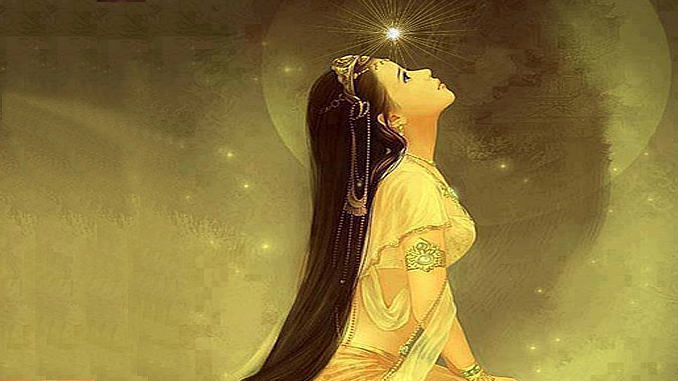
As ancients gazed through thick forested canopies searching out the celestial skies. The distant stars twinkling like diamonds pivoted around the polestar coursing the celestial waters. The curvilinear motions of these planets were known to the ancients as “Ka” the first letter of the Sanskrit language and defined as “light” “splendour” “spirit” and also “water” the luminous waters of “Ka-rana” the causal ocean.
~
This “light” of “Ka” becomes “Kam” seen by the ancients as a tainted love, a human centric obsession, a perversion of something much deeper, that which reflects the original loving nature of the soul. The primal meaning of “Kam” is “the human measurement ( ma ) of divine light ( ka )” its the combined expression of that which is unlimited ( Ka ) and that which is limited ( Ma ) as in the embodied soul. In the Bhagavad Gita Lord Krsna addresses Arjuna about the “burning” nature of “Kam” and “Kama”.
~
“ The blessed lord said, It is lust only, Arjuna, which is born of contact with the material modes of passion and later transformed into wrath, and which is the all-devouring, sinful enemy of this world. As fire is covered by smoke, as a mirror is covered by dust, or as the embryo is covered by the womb, similarly, the living entity is covered by different degrees of this lust. Thus, a man’s pure consciousness is covered by his eternal enemy in the form of lust, which is never satisfied and which burns like fire.” Gita 3.37
~
“Kama” meaning “lust” “love” “desire” is personified by “Kamadeva” the God of love, the Vedic cupid. In Europe they drop the “K” and “Kama” meaning “love” becomes the Latin “amare” meaning “love” and this then produces “amorous” “amour” “amiable” “amanda” “amicable” “enamor” “paramour” and “amigo”.
~
Through ritual and sacrifice the ancients sought to purify “Kam” into its original spiritual essence. “Ka” was the divine light which springs from the e-ka ( Narayana ) residing within the causal ocean ( Ka-rana ) and “Kam” was the “longing” the “desire” to reconnect to the Gods, a reflection of the souls original loving propensity.
~
“Ka” meaning “light” expresses its divine nature in “Kav” meaning to “praise” the Gods, it becomes “Kan” to “please” the Gods, it becomes “Kaj” to make the Gods “happy”, it becomes “Kas” the “illumination” of the Gods and it becomes “Kal” the movement of the Gods, the movement of the celestial spheres, that which produces the illusion of time “Kala” personified by the Goddess of time “Kali”. The ancients observing and “Kal-culating” the movements of these heavenly bodies, organised them into a “Kal-endar” all of which records “Ka” the divine light seen as “the curvilinear motion of the heavenly spheres”.
~
“The language of man is not formed on earth but in heaven and there is a threefold energy – an eternal truth, a manifesting force and a sustaining delight by which everything is created and everything is perfectly arranged”. Sri Aurobindo
~
“The universe is called in Sanskrit ‘jagat’ ( that which moves ) because nothing exists but by the combination of forces and movements. But every movement generates a vibration and therefore a sound that is peculiar to it…Since each element of matter produces a sound, the relation of elements can be expressed by a relation of sounds.” Alain Danielou – (1907-1994)
~
“The symbols of the alphabet were not the result of chance or mans whims, but rather of divine intervention, they were agreed upon with the heavenly bodies” De Occulta Philosophia – Enrico Cornelio Agrippa.
